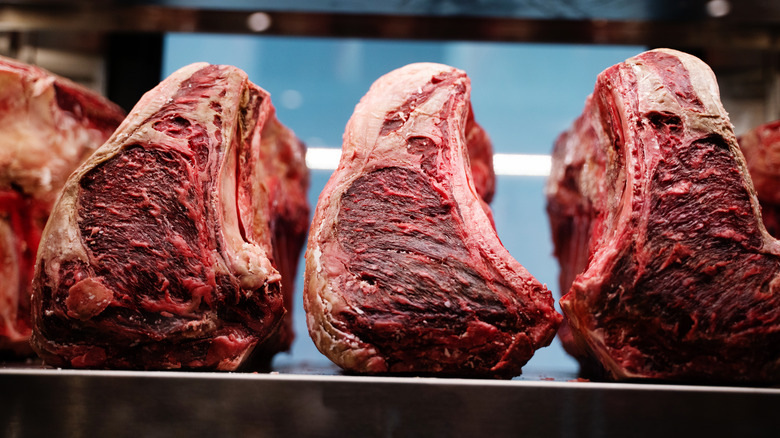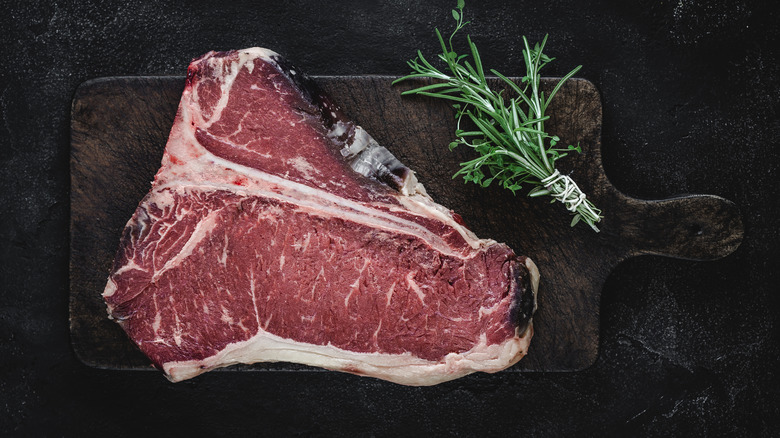Why You Should Consider Dry Aging Steak At Home
A tender, juicy steak is a meal that oozes luxury, and unfortunately steakhouses reflect that in their prices, which is why so many people dedicate themselves to mastering steak in their own kitchen. The quest for the perfect home cooked steak is never ending, and dry aging should be part of that mission. It starts with finding a high-quality butcher and picking out your favorite cut of meat, but replicating the steakhouse experience gets a little more complicated after that. You'll figure out how to get the perfect sear, yet there's still going to be something not quite hitting the same way — and that should bring you to dry aging. Most high-end steakhouses do it, and there's good reason to try it yourself at home. Tasting Table reached out to chef K.C. Gulbro, ambassador for Certified Angus Beef and the owner of FoxFire Restaurant and the Copper Fox event venue, to get more details.
According to Gulbro, the process is worth the effort because it can be quite impactful on flavor and texture. "As the steak undergoes dry aging, it develops a richer beef flavor with a hint of nuttiness," he said, adding that dry aging also tenderizes the meat. "Dry aging your steak can be cost-effective, but it does require time," he noted. Per the chef, it's best to use "an excellent bone-in cut or meat with a nice fat cap." A New York strip or ribeye are his preferred choices.
Dry aging steak adds complex flavors, but requires time and safety precautions
K.C. Gulbro did tell us about the downsides to consider when dry aging steak as well. The biggest thing he mentioned is to be cautious about food safety. "Dry aging in your refrigerator can be difficult as you must control airflow and temperatures," he explained. This can be taken care of by putting your steak on a rack in the ideal position for dry aging meat, which is near the fan to encourage airflow and help dry it. If you don't have a sufficient fridge fan, you may need to find space to insert a small fan in there that you can keep running.
Furthermore, the chef reminded us that "using a whole muscle is important as the loss is less than individually dried steaks." Large cuts of steak are necessary for dry aging because some parts will always be lost to rot and must be sliced off. With smaller individual steaks with less surface area, this could mean losing half the steak or more. Sticking to large cuts is easy enough to accommodate, but some problems are hard to get around no matter how careful you are. "Dry aging in a regular refrigerator can take up space and, if not monitored properly, can create odors in your refrigerator," noted Gulbro. In the end it will be up to you to determine whether the flavors of dry aged steak are worth the time, space, and smell.

